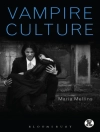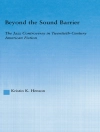This collection of original tunes presents 180 carefully graded sight-reading pieces and exercises in a range of musical styles. Taking an approach based on self-learning, the 11 sections of the book focus on developing different key technical skills as well as introducing the student to a plethora of musical terms.
Each section of the book contains solos, as well as trumpet duets and pieces with piano accompaniment for practising ensemble sight-reading. Suitable for preliminary, to advanced level students. Part of the comprehensive Sight-Reading series published by Schott and edited by John Kember.
Table of Content
Section 1: Introducing notes C, E and G – Solos – Duets – Accompanied pieces – Section 2: Notes C-G, 2/4 time – Solos – Duets – Accompanied pieces – Section 3: Introducting G major and F# – Solos – Duets – Accompanied pieces – Section 4: Notes C-C, incl. F# and Bb, 3-time, quavers and dotted rhythms – Solos – Duets – Accompanied pieces – Section 5: Keys D, A, Eb and Bb majors, D minor, 3/8 and 6/8 time, dynamic marks – Solos – Duets – Accompanied pieces – Section 6: Range: Bb-G.Keys: A, D, G, C and F minor, Db major. New features: Compound time, semiquavers and triplets. Performance directions and dynamics – Solos – Duets – Accompanied pieces – Section 7: Swing style – Solos – Duets – Accompanied pieces – Section 8: General revision using keys up to 4 sharps and flats – Solos – Duets – Accompanied pieces – Section 9: Simple transposition, chromatic figures and Dorian mode, five time. 5/4 and 5/8 – Solos – Duets – Accompanied pieces – Section 10: Further transposition. Dance styles and whole notes – Solos – Duets – Accompanied pieces – Section 10: Further transposition. Dance styles and whole notes – Solos – Duets – Accompanied pieces – Section 11: All keys, double sharps and flats. Baroque to Atonal styles – Solos – Duets – Accompanied pieces – Glossary
About the author
John Kember studied at Trinity College of Music, London and has enjoyed a varied career in both performing and academic spheres, ranging from teaching in schools and privately, to working as composer, arranger, pianist and conductor in Concert Halls, theatres and recording studios. Currently John is working on a number of new and exciting projects for both publication and performance. He has a busy private teaching practice in south east London and teaches for Kent Music School and the Kent Centre for Young Instrumentalists in Maidstone. John was an examiner for the Associated Board of the Royal Schools of Music from 1989 until 2005












